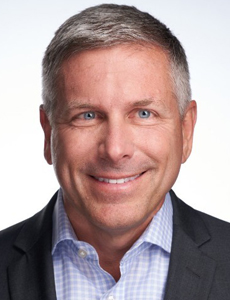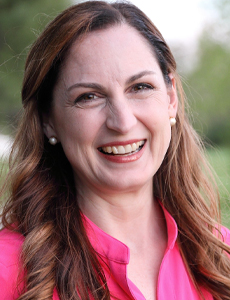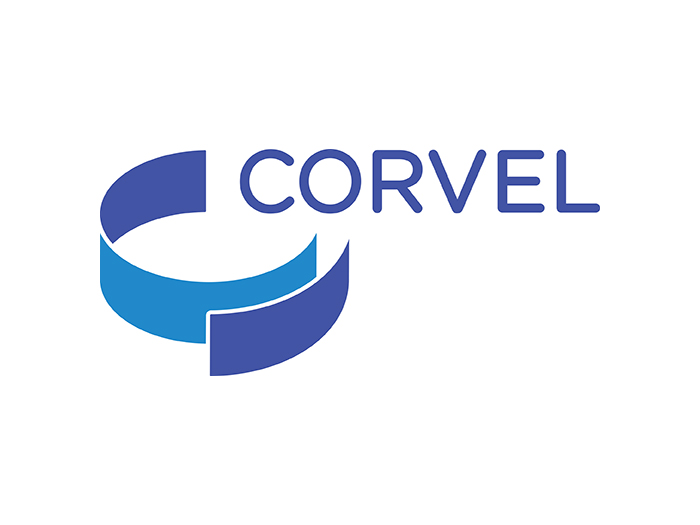From Hybrid Work to the Great Resignation and Retiring Boomers: Two Workers’ Comp Pros Discuss the Talent Gap and Possible Solutions

The workers’ comp space is dealing with a talent shortage that may stand out from other industries just by virtue of its severity.
Like many economic sectors, it grappled with the consequences of COVID-19 and the Great Resignation. But while other lines of business may have workers of a variety of ages to maintain operations, workers’ comp claims organizations are struggling; predominantly older workers in this field are retiring in droves, creating a knowledge gap for many firms.
In conversation with Risk & Insurance®, Steve Laudermilch, executive vice president and general manager with Enlyte, and Rebecca Morgan, vice president of product management with Mitchell, detailed how the industry is responding to these talent challenges — and how technology can help improve training and reduce the workload for adjusters so they can focus on more critical claims management tasks.
Risk & Insurance: I know COVID changed a lot of things about the way the world works. What differences in workforce models are you seeing in the workers’ compensation industry?
Steve Laudermilch: I would say, by necessity, COVID helped prove a theory that many jobs could be performed remotely, including claims roles. Even after the pandemic, remote work had some staying power. One reason is because people truly believe that they can be highly productive working from home. They no longer have a commute, which has given people back time that often ends up being spent at a laptop or doing work. The other thing is that they just prefer to work at home. They like the balance it gives them in their lives.
Within the last six months, the pendulum has definitely swung back to a hybrid model, with many of our workers’ compensation carrier clients requiring two or three days in the office. There’s a common belief by leaders that an office presence helps reinvigorate the adjuster community’s personal connection. There’s learning that simply occurs more naturally when people are together.
But I think there are some challenges, too. Some employees will simply opt out of hybrid work because they prefer being fully remote, and they’ll say “No, thank you” to the carriers that are asking them to come back.

Steve Laudermilch, executive vice president and general manager, Enlyte
Don’t forget that a lot of claims organizations hired people during the pandemic when they had a remote work model and there are many people who decided “OK, work remote? I can move now” when the shift first occurred. So they may have relocated away from where an anchor office might be.
It’s going to be an interesting decision as to how employers handle that, because they’ve got good talented people that aren’t closely attached to an office. If they go back and require people to be there, they may lose some talent.
Rebecca Morgan: Steve described this as a pendulum, and during the pandemic, the pendulum swung clearly in one direction, which was toward fully remote. Before the pandemic, it was really everybody in the office. Now, we’re swinging into more of a hybrid.
We’re probably not done swinging that pendulum. We’re starting to see that shift to a hybrid model where people are somewhat going back into the office. I think that’s going to swing back and forth just a little bit until every organization finds its sweet spot and figures out how to do it just right.
R&I: I know there has also been concern about the aging workforce in workers’ compensation. It seems the industry will lose critical experience as more experienced claims adjusters begin to retire. Is this starting to happen, and if so, how are companies responding?
SL: There are lots of stats that provide evidence of a looming exodus of technical talent. One survey found that 28% of claims adjusters plan to retire in the next five years.
The sector has responded largely by accelerating automation efforts, trying to get the routine or repeatable tasks off the desks of adjusters so they can focus on the more technical, value-added work.
Another focus has been using data, technology and tools to help with decision support and alerts. What customers have told us is that they need help institutionalizing the knowledge in their organization — whether it’s in our tools or their claims system or other places — because they feel like they’re going to lose the claims wisdom that exists in their organization in the next several years.
The challenge is really, “How do I get people that are pretty far behind in the learning curve caught up? Because of the high amount of turnover, how do I get newer employees up and running and accelerate their training and support so that they can have the tools they need to be very productive?”
R&I: There’s been a lot of volatility in recruitment and retention of claims staff. What are some trends you’re seeing lately?
SL: If you asked our customers the question about recruitment and retention a year ago, they would’ve just been overwhelmed in terms of getting their claims units fully staffed. They were completely at a deficit in terms of getting people in the seats to do the job. Some would say they even turned over maybe half of their workforces because of the Great Resignation and the jumping from job to job that was occurring.
As we’ve talked to our customers over the last two quarters, that story has completely changed. They feel pretty comfortable right now and they’re in a good position with staffing. There’s always an element of turnover, but the real issue that clients are talking about now is, how do they get people ramped up? How do they get them experienced so that they can become more productive?
RM: What we saw going on a year or two ago during the Great Resignation with the employee turnover and wage inflation was really an unhealthy environment for employment in general. We knew there was a bubble, and we knew it was going to burst at some point.
I’m not saying it’s burst just yet, but we’re starting to see that correction. We’re getting back to a more healthy environment where people are staying in their jobs longer, which allows businesses to thrive more.
SL: The other thing I would say is, in terms of retention, I think that there’s a widely held belief, at least among claims leadership, that hybrid work helps keep people around. It creates camaraderie and connection to their teams and their employer.
So that is a collateral benefit in a lot of the claims leaders’ minds: that “If I can get people back into the organization, into the office, and have a presence there, then there’s a personal connection there that just doesn’t exist when we’re talking and working together virtually.”
R&I: Earlier in the conversation, you talked about how, in some ways, carriers are responding to this by increasing automation. I’m curious how you both see the volatility and relative inexperience in claims staff changing the use of technology in claims handling.

Rebecca Morgan, vice president of product management, Mitchell
RM: With less tenure comes less institutional knowledge. We’ve got baby boomers who are exiting the workforce. They’ve got decades of experience. Most of it is contained just in their brains or, at best, in a brain dump into some sort of documentation. So the documentation this new generation of staff ends up with is less and less useful. Instead, we’ve got to look at how we can embed that institutional knowledge inside technology.
I’ve got a couple of examples of how that can happen. First of all, most adjusters newly entering our industry don’t come with a medical background. As they gain experience over time, they get pretty good at understanding what a diagnosis means and how that relates to medical procedures. But there’s a problem in trying to fill that gap until that institutional knowledge starts to build — until they become experts.
Here’s one example. We have a visualization when an adjuster is looking at a claim. We call it the Blue Man because it’s an outline of a human body and it’s blue and we highlight on that body the part of the body that has been injured. Then the adjuster can look at that claim diagnosis compared to the bill diagnosis and be able to determine if there is a mismatch there. It helps them to find insights about the claim.
Another example is something that we refer to as findings. In findings, we’re just trying to surface insights about the claim, causes for concern, conditions like treatment that occurred before the date of injury, or a gap in treatment, or a procedure that doesn’t match the diagnosis.
It’s up to the adjuster to then make the decision about what happens next, but the findings system helps them avoid trawling through rows and rows of data to try to figure out what’s going on with the claim. It helps surface it and give them the expert guidance that they need.
SL: Yes, I agree. What’s great about the world that we’re living in right now is that a lot of these inexperienced people are actually younger people, and so the ways they think about and use technology is far more advanced than some of us as we were coming up through the ranks.
There’s a real opportunity to make it interesting to them, so that they learn on the job in a way that they identify with. Hopefully, that keeps them around, keeps them interested, keeps them engaged so that they want to be in this career for a long time.
R&I: How have these workforce trends affected the way that claims organizations train and develop their employees?
RM: Steve really set us up nicely for this question because training is changing, because of both the remote and hybrid nature of our workforce as well as changes in the way that we consume information.
This generation consumes information differently. They expect to be trained differently than ever before. It used to be that we would put claims adjusters in a room with an instructor for weeks on end to learn the ropes. That is just more challenging in this day and age, both because of the environment that we’re in and because of the people that we’re training.
On the whole, we’re just not in the office for weeks on end, and when it comes to this newer generation of adjuster, it just isn’t the way they learn. They learn online, they learn in smaller increments, and they learn in the moment that they need to know something. So that means that we’ve got to adapt the way that we provide training to the staff.
Here’s a couple of examples of how that can be done. We’ve got a piece of software that’s a reporting and analytics tool. When a user first logs in to the software, it detects that this is their first time using that piece of technology and it says, “Would you like to be guided through your first time creating a data visualization?” They can click yes or no, and in about 30 seconds they can be guided through exactly how to use that tool. It’s right in the moment that they decide that they need to use that tool.
Here’s another example: user’s guides. In our industry, we’ve got big binders of information — maybe they’re online, but there’s still thousand-page documents, job aids or guides on how to perform a particular function. And once again, this just isn’t how we learn anymore.
Something that we’ve done is that we’ve begun to break those guides down and embed that guidance in the technology so the user can click an icon and they can pop up context-specific information of exactly how to perform the function that they’re attempting to perform, right where they’re on that screen.
It’s very important that we pay attention to user interface design and user experience. The goal in designing these technology solutions is that we should be able to put it into the hands of a user and just let them go. It should be that intuitive that they can just detect the steps that they need to take to accomplish the objective.
The good news is that technology is usually not the learning curve for this generation. It’s just second nature. The learning curve is the subject matter. That’s where we’ve got to give them that guidance that they need in order to be able to do their function quickly and in the moment and on demand.
SL: I think Rebecca said that really well. For the people that are learning, this needs to be intuitive, it needs to be timely, it needs to be relevant. If you hit the mark, if the user interface makes it cool to operate in that environment, that’s even better. &










